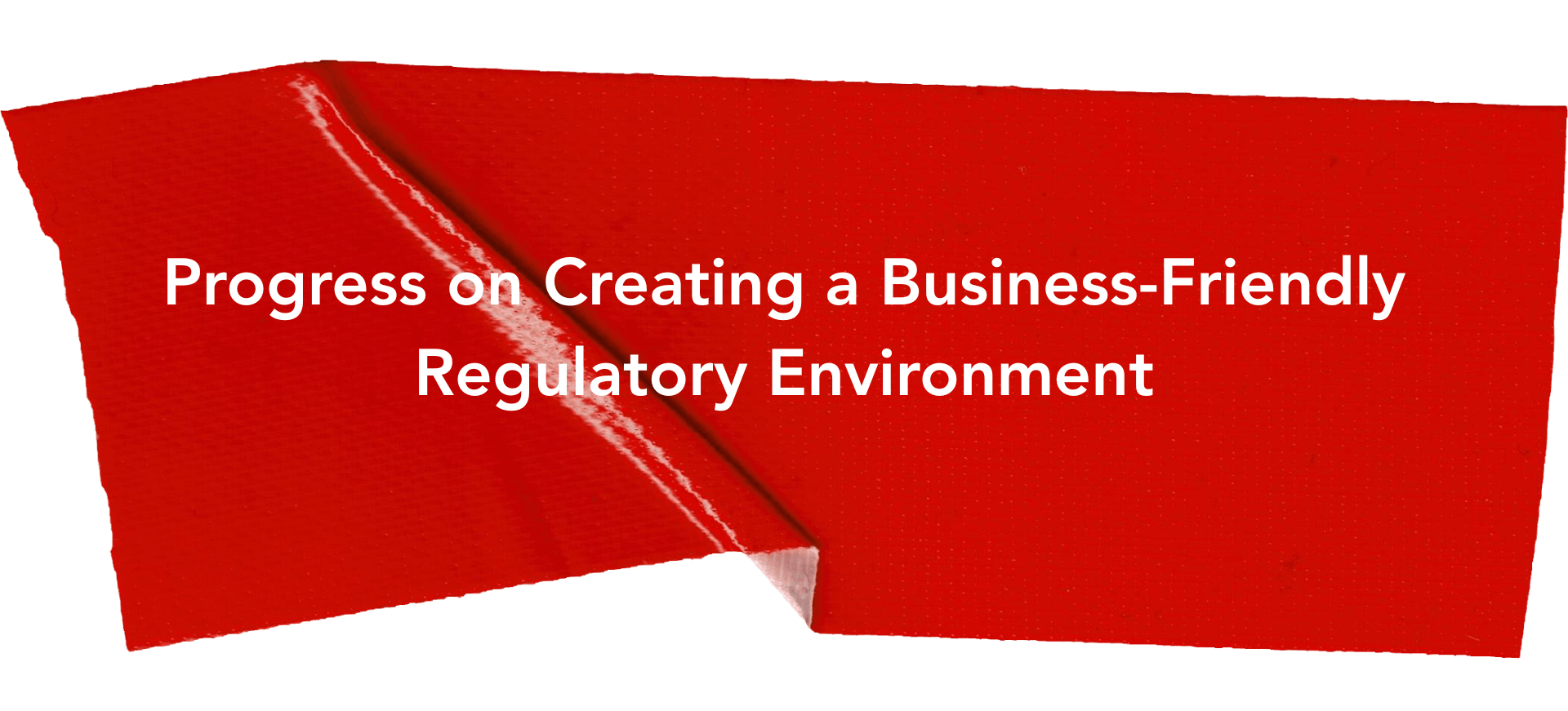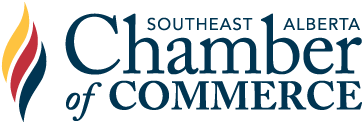Progress on Creating a Business-Friendly Regulatory Environment

Progress on Creating a Business-Friendly Regulatory Environment
Executive Summary
In 2013, the Southeast Alberta Chamber of Commerce first drafted a 'red-tape reduction' policy with a commitment to working with community partners and the government to create a more business-friendly environment. This commitment recognizes that small and medium-sized enterprises (SMEs) are a significant economic boon to the local, provincial, and national economies. We know that having to satisfy regulations and policies, complete forms, and follow processes can be costly for businesses, resulting in the stagnation of economic growth. An effort to nurture business and minimize hurdles by eliminating unnecessary regulatory requirements makes good economic sense for everyone. Many businesses in our community have found certain processes and regulations in the City burdensome, costly and time-consuming, and there may be several opportunities to reduce inefficiencies and maximize mutual prosperity. As a Chamber, we have regular conversations with our municipalities and our businesses to find solutions to these challenges.
Background: Why this Matters
Barriers to business can involve legislation, regulation, fees, permits, licenses, paperwork, standards, processing times, guidelines, filing and certification requirements, reporting, investigation, inspection and enforcement practices, and any procedures that affect the efficiency of government services for the individuals, organizations and businesses served.
The regulatory and compliance burden poses a serious problem for small businesses, mainly due to excessive regulatory processes putting immense strain on business resources. The disproportionate impact on small firms is especially important given that SMEs are a critical driver of our economy locally, provincially, and nationally. The costs of complying with regulations represent a significant proportion of overhead expense and net margin for businesses, and slow the development of new infrastructure projects without proper justification.
Cumbersome legislative redundancies, lengthy approval processing times, and complex reporting obligations mean that companies must spend valuable time and resources on understanding and meeting what can be perceived as arbitrary technical requirements. Many must even hire external consultants just to administer the associated paperwork. As a result, companies have fewer internal resources to finance investments in assets, knowledge, and innovation. All of this adds up to less time and resources for investing in business and decreases local economic competitiveness.
The lack of clarity when accessing information and assistance results in frustration for many companies, as there is difficulty in identifying the most appropriate individuals in the government to provide concrete answers. The problem is further compounded by various interpretations of policy guidelines and inconsistencies in approach by some municipal representatives. We must shift to an outcome-sensitive approach that considers variances, alternative solutions and inter-departmental coordination to encourage development.. In enforcement, there must be a clear accountability framework for regulators. With the current legislation, local businesses must absorb the costs in the process-focused approach; regulators have no disincentive to imposing unnecessary requirements, which creates delay, confusion, or contradictory instructions for a regulated company.
Reducing the compliance burden will require concerted action to pinpoint and eliminate existing irritants that clearly affect growth, competitiveness, and innovation. To succeed, the commitment to reduce legislative barriers where possible should be top of mind in government and must aim to reduce the burden of regulatory requirements on businesses. It is an important initiative to follow through on to help businesses grow, prosper, and create jobs without being continually impeded by unnecessary regulations.
The Southeast Alberta Chamber of Commerce is committed to ensuring that established businesses that want to expand and grow their enterprises have the opportunity to do so in Southeastern Alberta. New entrepreneurs and established enterprises need an appropriate climate to begin and continue business development. Business formation, growth, and expansion are potential sources of new wealth in our economy. This activity benefits all residents directly, as in the creation of employment opportunities, and indirectly, such as through taxation.
The businesses in our community need the support of our municipal government through creating an environment that can nurture innovation by putting forward a clear communication strategy, along with consistent, easy-to-comprehend expectations and guidelines, connections for process support from the City, and clear timelines.
What have we worked on for our members....
While we know this work is ongoing, we have noted various achievements since we adopted the policy in 2013 and have worked with various individuals and departments in City Administration since then.
Achievements have included:
1. Introduction of e-permitting and improvements to the online system and applicant tracking. The applicant/contractor can now check on status and the system will flag any delays.
2. Variations of a business support officer over the years, with work ongoing now through Medicine Hat Economic Development.
3. Development of a handout and website page that provides information about “what to expect when doing business with the City”, including a “step by step” guide for businesses, what they should expect and how to prepare themselves prior to coming in for a pre-application meeting, permit or consultation. We have assisted in the promotion and distribution of this information, including profiling it on our Local Business Toolkit.
4. The ability to have pre-application meetings as part of the development process.
5. The provision of a temporary occupancy permit when safety is not an issue and improvements to the change of use permits.
6. Changes to the home-based business per customer provision and business licensing fees.
7. Introduction and use of a Public Participation Policy and process of engagement.
8. Mark Up/Red-Line Notations on bylaw changes that are introduced.
9. Planning and Development Services launching a Process Improvement Project.
10. Introduction of new rates for utility servicing and abandonment of services for greater predictability and budgeting for development.
11. Introduction of new permitting timeline standards and reporting.
12. Plans to work on a water strategy in 2025-2026.
13. Publicization of traffic counts.
14. Online queries for business licensing, 'find a contractor' and building permits:
- https://epermit.medicinehat.ca/License/Locator?licenseType=B;
- https://www.medicinehat.ca/en/business-and-development/business.aspx
- https://www.medicinehat.ca/Modules/News/en/building-permit-notices
15. The decision to revisit and review the method for off-site levies at the request of the Chamber and development community and previous improvements to rates, FAQ documents and processes
16. Improvements to the patio process and associated costs.
17. Changes to the Land Use Bylaw (2013 version) with recommendations from the Chamber adopted at that time.
18. Updates to the Anti-Noise bylaw (2010) with recommendations from the Chamber adopted at that time.
19. Creation of a regional Economic Development Strategy and Action Plan.
20. Introduction of business and development incentives with ongoing recommendations through our policy on Creating a Strong & Diverse Local Economy
While we have noted several achievements and improvements, we also recognize this work is not complete. Following our last business roundtable with the City and our business community on May 9, 2025, the Chamber of Commerce adopted revised recommendations with our updated policy recommendations here: Creating a Business-Friendly Regulatory Environment
